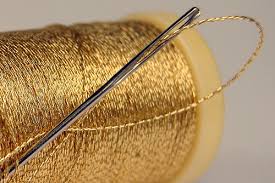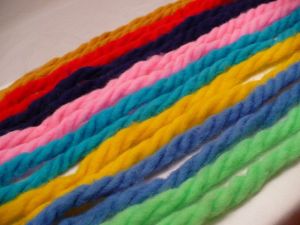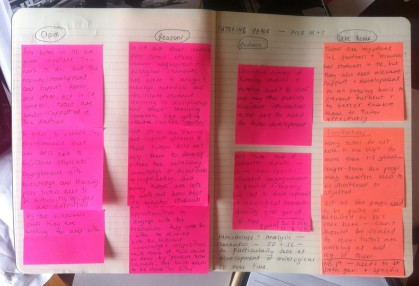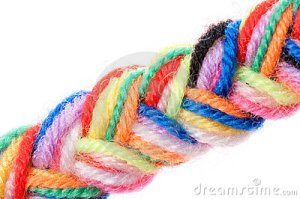One of things many undergraduate students I have worked with over the years have always battled with is understanding the difference between an essay that makes an argument, and an essay that has useful information in it that is not tied together around a central thread or point. In my former role as the coordinator of a university writing centre, I spent a great deal of time thinking about how to help students understand and address this struggle through writing workshops and tutorials, and in my work with their lecturers and tutors.
Getting your head around what an argument is, and how to craft and make substantive and coherent arguments, is key to succeeding at your higher education studies and beyond, and not just in the humanities and social sciences. Although they may do it in different ways and in different forms, all fields make and defend arguments for and against things: this design for a footbridge rather than that one for this community; this method for building a hydrology model rather than that one in this project site; this theory of neoliberal capitalism and its effects on modern society and not a different one; and so on.
The argument is the answer to the ‘So what?’ question you don’t want your readers to ask at the end of your essay. It is the ‘golden thread’ if you like, that takes the strands of your argument and pulls them into a defined shape to substantiate and develop the central claim your essay wants to make. This is often called ‘the thesis statement’. It needs to be clearly made, often in the introductory part of your writing, so that your reader knows what it is that is helping you to select and organise the parts of your essay or paper that will follow. What follows the introduction will be a connected selection of sub-claims, supported by relevant evidence, that further develop and substantiate the central claim, and all of these sub-claims must make up this golden thread – they need to connect, in a logical and coherent order, to create an argument that is persuasive and makes sense.
You could think of these sub-claims, and the evidence you have selected from literature or empirical data, or both, as strands of coloured wool. On their own, side-by-side, they just make up a collection of strands of coloured wool. Without a purpose or aim to draw them together into a blanket or a scarf or similar, they are just pretty strands of wool. They need a knitter and the knitter needs a pattern to follow. In undergraduate and early postgraduate studies, where students are completing coursework, they are given their ‘knitting patterns’ in the form of task questions and instructions to respond to. Later on, in independent research, students need to design their own patterns, or research tasks.
Students, as the knitters, will read (or devise) the task, decide on what research needs to be done to generate the information needed to respond appropriately to the task, and using their prior learning as well as the thinking, reading and writing practice they have had thus far, they will ideally weave or knit the information together to create something new, that represents (hopefully in their own creative way) the pattern they were asked to follow. They will create new knowledge from existing knowledge, even in a small way, by taking a position on an issue and advancing a substantiated argument. Without the argument to tie the strands together into a pattern, the essay will likely end up looking a bit like the picture above – a collection of paragraphs, each with their own point, but together not quite managing to create something coherent or sensible. The essay may well leave the reader wondering: ‘So what? What is the point of all of this?’
A tool I recently learnt on a writing retreat has really helped me to create a define my own ‘pattern’ for my writing, and is helping me to make sure that I am actually knitting together arguments in my papers that make sense, and are properly substantiated. Taken from a book called The Craft of Research, the tool helps writers to plot out the golden thread by asking them to think carefully about the main claim, the sub-claims, the reasons for those claims, and the evidence needed to substantiate them. Claims and evidence are probably quite obvious – of course we need both of these elements to write a paper worth its salt. But what of reasons? According to the authors, reasons are important because they outline the logic of the argument you want to make. I have learned, using this tool, that I am quite good at generating many reasons for the research I want to write about, but I am less adept at pinning down my claims. This tool has been helping me to work on this.
This (below) is my version of the tool in action: an argument for a paper I am working on plotted out in my research journal on stickies. Following the retreat facilitator’s advice, I use stickies to avoid writing long-winded claims and reasons. This is not the plan for your paper, this is the plan for your argument, and you need to be able to identify and state your claims, reasons, and related evidence fairly concisely. If it takes you 7 or 8 stickies to state one claim, you have some more thinking and refining to do before you are ready to plot out your paper and knit your strands together.
I start with my main claim, and then identify any sub-claims that are part of that. I then write out the reasons for the claims I am making, and follow with the evidence I either have, or need to have, to support these claims. The orange stickies at the end contain my ‘take-home message’ or the answer to the ‘So what?’ question (which will be part of my conclusion) as well as the limitations on the argument I want to make. Not every paper will include limitations, but all papers need to have claims, reasons, evidence, and a clear answer to the ‘So what?’ question. All papers we write, whether as undergrads, postgrads or professionals, need to have a point – and the point is the argument, and the way in which we are weaving that golden thread through the writing to create something new from all the strands of research, reading and thinking we have been doing.
If you are a writing teacher or tutor: consider using or adapting a tool like this to help students you work with understand the link between the research they are doing and the information they are gathering, and the ways in which this information and research need to be pulled together selectively around a central argument that knits all the paragraphs or parts together into a coherent, persuasive whole.
If you are a writer: try this tool out, and look for others that can help you to make clearer the ways in which your arguments are constructed and crafted, to ensure that your own writing is a clear, persuasive and makes as much sense as possible.
Reference: Booth, C., Colomb, G. and Williams, J. (Eds) 2003. The Craft of Research. Chicago: University of Chicago Press.



